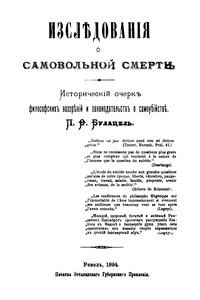В пучине бренного мира. Японское искусство и его коллекционер Сергей Китаев - [72]
.” It may be pertinent that Kitaev’s elder brother, Vasily Kitaev, had committed suicide “having a sudden fit of acute insanity” in 1894, as was mentioned in passing in a newspaper obituary[241].
After an initial hospitalization in Tokyo’s Aoyama neurosis clinic, Kitaev was transferred to Tokyo Prefectural Matsuzawa Hospital with the diagnosis of manic depressive psychosis. This occurred in December 1922; soon afterward, their house on the Bluff was destroyed in the Great Kanto Earthquake. Kitaev’s wife and son left for America (the name Innokenty Sergeevich Kitaeff is in the 1925 M.I.T. yearbook). Sergei Nikolaevich died in Matsuzawa Hospital on April 14, 1927. The notice of his death appears in the bulletin Seikyо̄ Jihо̄ (The Orthodox Messenger), stating that an admiral of the Russian navy, Kitaev, was given the last rites and escorted to a cemetery by a Father Inaga and an attendant, Vasily[242].
During the following decades, the name of Kitaev was completely forgotten in Soviet Russia. His collection (or what was left of it) entered the Pushkin Museum in 1924, with the closing of the Rumyantsev Museum; between 1929 and 1930 the Kitaev Collection was entered in accession ledgers. In 1950, Beata G. Voro- nova, the curator referenced earlier, was assigned to the collection. She held that post for the next fifty-eight years[243].
The Mystery of Big Numbers
Working on the catalogue of the Pushkin prints, I resolved to investigate the huge discrepancy between the original number of Kitaev holdings mentioned in different sources, and what remains. In the Pushkin Catalogue, which had been conceived as a complete presentation of the museum’s holdings of Japanese prints, only 158 of Hokusai’s works are listed (even including those few with a dubious attribution and coming from other, non-Kitaev, provenances). It is not so small a number in itself, but somehow it is more than twenty times smaller than Kitaev’s own estimate[244].
We may surmise that Kitaev counted as individual sheets all prints in bound albums and books that are not included in the 2008 “catalogue raisonné[245].” Hokusai’s complete Manga comes to slightly less than one thousand pages, but there is no full thousand in Kitaev’s Brief List. Even if we make the rather improbable hypothesis that Kitaev counted the lightly colored pages of the Manga among the black-and-white prints, it still won’t work: his 1666 black-and-white prints are mentioned as “large,” whereas the Manga format is small. Luckily, the quantity (one thousand) and the format (medium) in the rubric “late color prints” coincide with the Manga, and there is a late edition of the Manga in the Pushkin. But where is the first edition of the Manga, the possession of which Kitaev wrote about so proudly? He could err in some attributions or dates, but it is less likely that he would boast about a restrike of mediocre quality, even if some unprincipled “agents” had tried to fool him. We should insert here that Kitaev held his “agents” in high esteem: “Araki-san is a traditionally educated, charming Japanese. He frequently visited my ship; together we took to Hokusai,Ōkyo, Tani Bunchо̄ and others[246].”
Not so drastic, but still significant, is the discrepancy between Kitaev’s Brief List and extant prints by Utamaro (104 versus 70); Toyokuni (169 vs. 31); Yoshitoshi (450 vs. 53) and many other artists. I suggest that there may be three reasons for this variance. The first and most benign explanation is, as remarked above, that Kitaev may have listed every page in a book as an independent entry. Second, between the compilation of the Brief List and the time he entrusted his collection to the Rumyantsev Museum for custody in late 1916, Kitaev may have sold a number of objects. Third, between the compilation of the Brief List and the transfer of the collection to the Museum of Fine Arts (later called the Pushkin) in 1924, eight years passed that included the revolution and the civil war. We should add five to six years during which the crates and boxes of the Kitaev Collection were stored in cellars in the museum building on Volkhonka Street without even being inventoried, as prints were not registered in the museum’s books until 1929–30.
At the conclusion of his letter of August 15, 1916 to Pavlinov, Kitaev remarks: “Among several thousands of prints, there are more than two thousand that cost, according to foreign prices, between one hundred and four hundred marks each[247].” The 2008 Pushkin Catalogue includes less than two thousand prints (among them, more than one hundred that came from sources other than Kitaev). Furthermore, many of these prints – late, small-format series and some unassuming surimono – could not be among the best and most expensive two thousand. We should bear in mind that the 1918 interview with Kitaev in the Yokohama newspaper lists fourteen thousand objects, including about eight thousand woodblock prints.
A serendipitous discovery I made while studying prints in the Japanese collection curatorial room in January 2007 corroborates the theory that Kitaev sold off some of the woodcuts. On the lower left back corner of
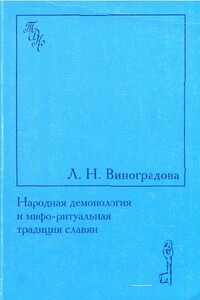
Книга посвящена «низшей» мифологии славян, т. е. народным поверьям о персонажах нечистой силы — русалках, ведьмах, домовых, о духе-любовнике и духах-прорицателях и т. п. Затрагиваются проблемы, связанные с трудностями идентификации демонологических персонажей и с разработкой методов сравнительного изучения демонологии разных славянских народов. При исследовании этого важнейшего фрагмента народной культуры главным для автора остается факт включенности мифологических персонажей во все сферы бытовой и обрядовой жизни традиционного общества.
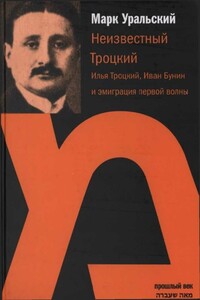
Марк Уральский — автор большого числа научно-публицистических работ и документальной прозы. Его новая книга посвящена истории жизни и литературно-общественной деятельности Ильи Марковича Троцкого (1879, Ромны — 1969, Нью-Йорк) — журналиста-«русскословца», затем эмигранта, активного деятеля ОРТ, чья личность в силу «политической неблагозвучности» фамилии долгое время оставалась в тени забвения. Между тем он является инициатором кампании за присуждение Ивану Бунину Нобелевской премии по литературе, автором многочисленных статей, представляющих сегодня ценнейшее собрание документов по истории Серебряного века и русской эмиграции «первой волны».
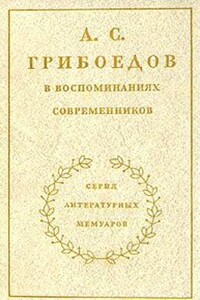
В сборник вошли наиболее значительные и достоверные воспоминания о великом русском писателе А. С. Грибоедове: С. Бегичева, П. Вяземского, А. Бестужева, В. Кюхельбекера, П. Каратыгина, рассказы друзей Грибоедова, собранные Д. Смирновым, и др.
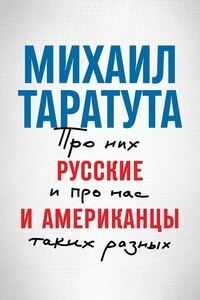
Эта книга о том, что делает нас русскими, а американцев – американцами. Чем мы отличаемся друг от друга в восприятии мира и себя? Как думаем и как реагируем на происходящее? И что сделало нас такими, какие мы есть? Известный журналист-международник Михаил Таратута провел в США 12 лет. Его программа «Америка с Михаилом Таратутой» во многом открывала нам эту страну. В книге автор показывает, как несходство исторических путей и культурных кодов русских и американцев определяет различия в быту, карьере, подходах к бизнесу и политике.
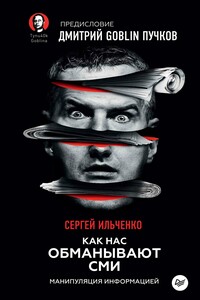
Ни для кого не секрет, что современные СМИ оказывают значительное влияние на политическую, экономическую, социальную и культурную жизнь общества. Но можем ли мы безоговорочно им доверять в эпоху постправды и фейковых новостей?Сергей Ильченко — доцент кафедры телерадиожурналистики СПбГУ, автор и ведущий многочисленных теле- и радиопрограмм — настойчиво и последовательно борется с фейковой журналистикой. Автор ярко, конкретно и подробно описывает работу российских и зарубежных СМИ, раскрывает приемы, при помощи которых нас вводят в заблуждение и навязывают «правильный» взгляд на современные события и на исторические факты.Помимо того что вы познакомитесь с основными приемами манипуляции, пропаганды и рекламы, научитесь отличать праву от вымысла, вы узнаете, как вводят в заблуждение читателей, телезрителей и даже радиослушателей.
